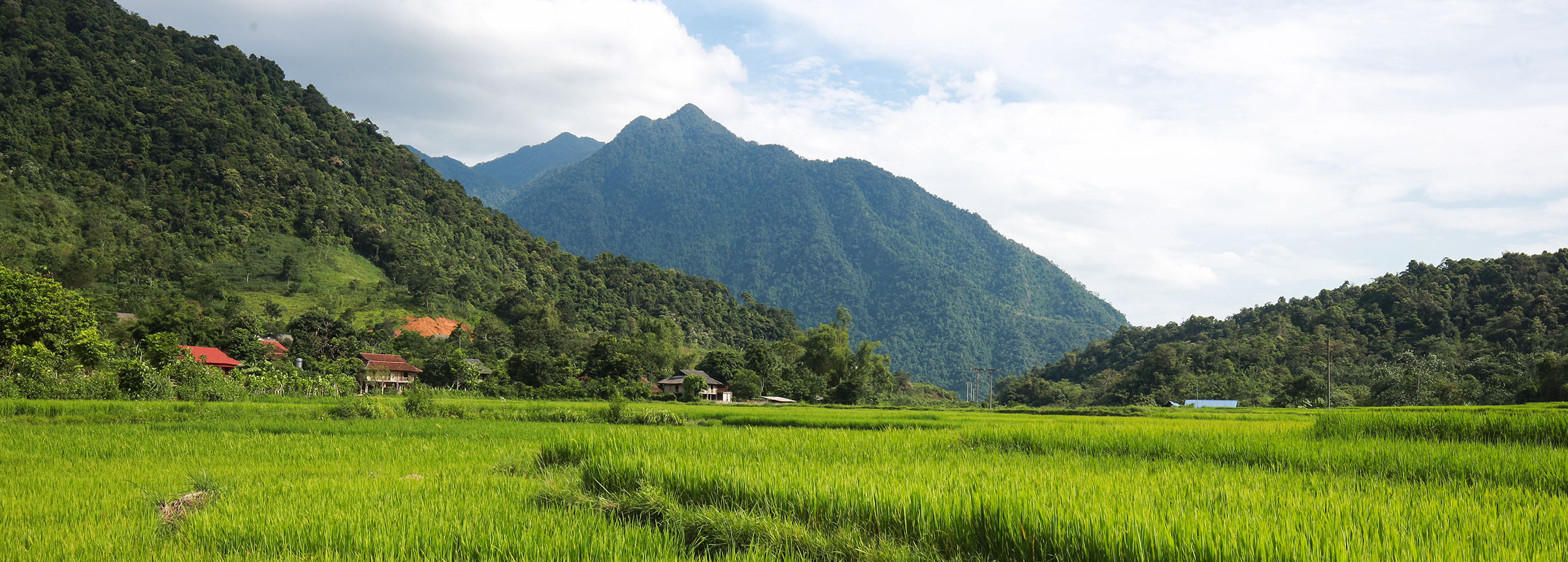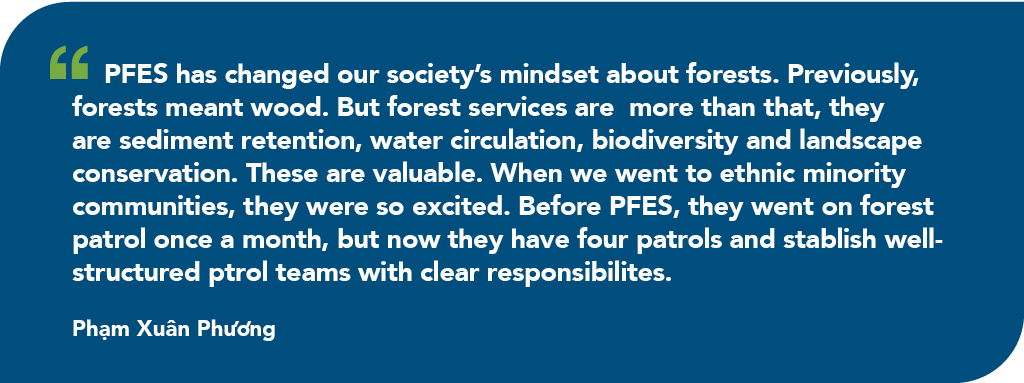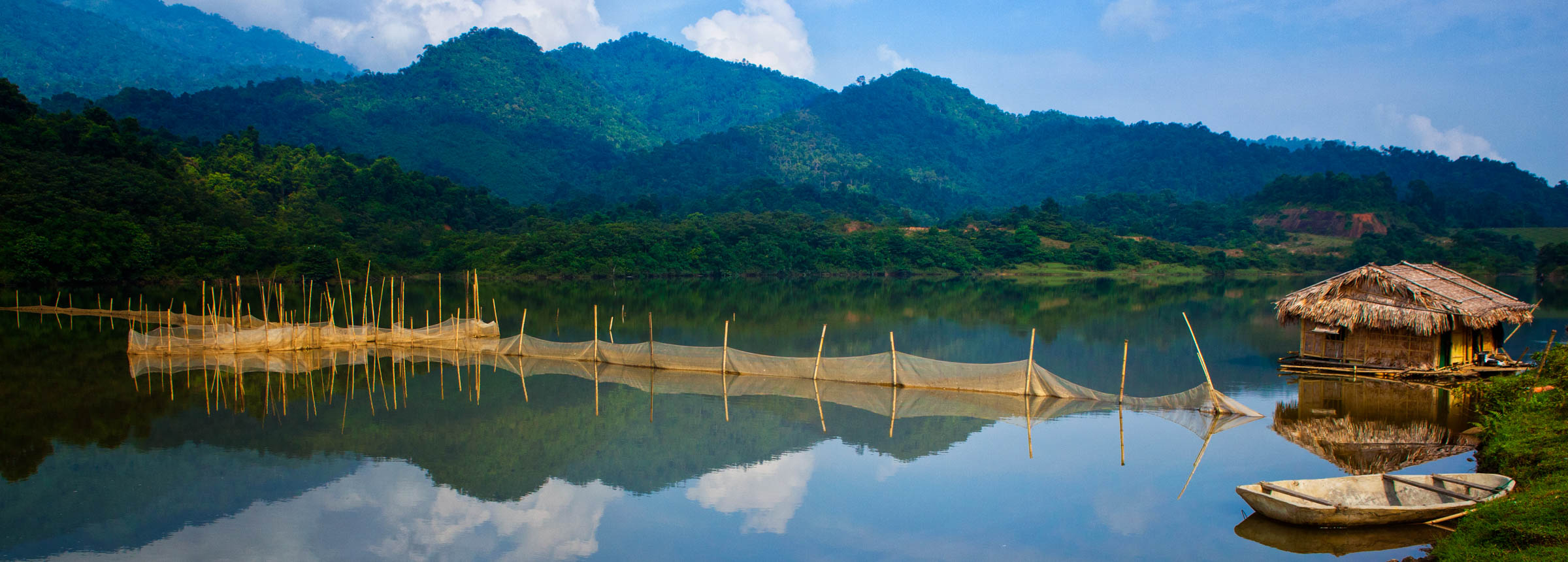
Winrock Publishes Detailed Guide to Payment For Forest Environmental Services System
First-of-its-kind Practitioner’s Guidebook Draws on Lessons Learned Partnering with Communities, Government and Businesses to Protect Vietnam’s Forests
The USAID Vietnam Forests and Deltas (VFD) climate change activity wrapped up in May 2021 after nine years of evolutionary work supporting the Government of Vietnam’s efforts to protect and preserve one of the country’s most important natural resources: its forests.
Implemented by Winrock, the project’s legacy is well established, and was lauded in a USAID press release touting some of VFD’s impressive and highest-profile impacts, including the creation and expansion of Asia’s first “Payment for Forest Environmental Services” (PFES) systems at national scale, which is now generating around $125 million annually to finance management of 6.6 million hectares of Vietnam’s forests. So far, Vietnam’s internationally recognized system has generated $723 million for 540,000 households, and has become a model for sustainable financing for forest protection, focused on supporting the needs of local communities.
The PFES system is already contributing to increased incomes and living standards for hundreds of thousands of people living in the mountainous areas who receive payments to help protect forests. In its press release about the project’s closure, USAID highlighted VFD’s close collaboration with Vietnam’s Ministry of Agriculture and Rural Development (MARD), a partnership that helped improve and expand PFES to increase transparency, efficiency and effectiveness through electronic payments to disburse funds and enhance monitoring and evaluation. In all, VFD trained approximately 350,000 people on climate change adaptation, forest management and livelihoods development while helping over 200,000 people learn about and adopt climate change risk reduction practices in the Mekong and Red River Deltas.
Along the way, USAID’s VFD team and community partners listened, learned, reflected and adapted, and shared a comprehensive summary of those lessons and reflections in its end-of-project report. And in one of its final acts, VFD went a step further, developing, vetting and publishing a first-of-its kind PFES Practitioner’s Guidebook, intended to be used as a learning tool by other implementers, governments, project developers or funders interested in designing or implementing their own PFES programs – whether in Vietnam or elsewhere.

The guide starts with the basics, explaining what PFES is and how it works. Essentially, it’s a mechanism to compensate individuals or communities in exchange for protecting or sustainably managing ecosystems that provide essential services ── such as clean water, carbon sequestration, or flood absorption. In Vietnam, PFES planners wanted to target sectors and institutions that rely on forest environmental services. For example, hydropower plants rely on the continued provision of consistently flowing and silt-free water to be able to operate; ecotourism operators rely on the existence of biodiverse and beautiful landscapes to attract tourists; and greenhouse gas emitting industries rely on forests to help remove and sequester CO2 from the atmosphere.

The guide recognizes that “each country or landscape requires a customized solution that fulfills the social, economic, political, and cultural requirements of that context,” and acknowledges that no guidebook can consider all such situations. Rather, it is intended to be an adaptable framework for designing and implementing a program that fits local conditions, and is organized and presented in five phases: “Engage,” “Define,” “Build,” “Implement,” and “Innovate,” with the experiences of PFES and partners in Vietnam described and intertwined within (and alongside) the steps. In this way, it is hoped that future PFES implementers can see how each step was approached and applied in various contexts in Vietnam.
“One of the fundamental challenges of forest conservation is how to make it more valuable to keep trees standing than to cut them down,” said Winrock’s Brian Bean. “PFES creates a win-win-win for forest managers, local communities, and the companies that benefit from the forest protection. For example, a company that benefits from clean water in a local river may be willing to pay the local community to protect the nearby forest because it helps reduce runoff into the river after storms.”
Practitioners like Pham Xuân Phương, former deputy director of MARD’s legal department, say there is much to be learned from Vietnam’s practical approach to forest conservation; the information presented in the new guide establishes the blueprint for the approach.

Download the PFES Practitioner’s Guidebook here: PFES Practitioner’s Guidebook
Related Projects

